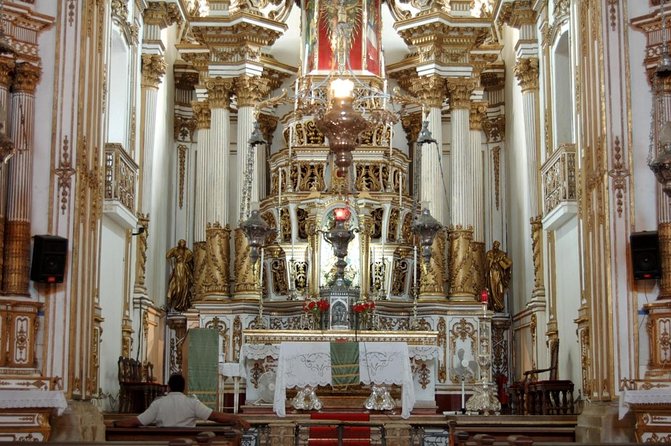Bonfim Basilica, Salvador: A Sacred Sanctuary of Faith and Tradition

Nestled atop a hill overlooking the vibrant city of Salvador, Brazil, the Bonfim Basilica emerges as a beacon of spiritual devotion, cultural heritage, and religious tradition. This iconic sanctuary, dedicated to Senhor do Bonfim (Lord of Bonfim), has long been revered as a symbol of faith and protection by devotees from all walks of life. From its majestic facade and sacred artifacts to its vibrant religious festivals and centuries-old traditions, the Bonfim Basilica holds a special place in the hearts of Salvadorans and visitors alike, embodying the enduring spirit of Brazil’s religious and cultural identity.
A Symbol of Faith and Devotion
The Bonfim Basilica, originally constructed in the 18th century, stands as a testament to the enduring faith and devotion of Brazil’s Catholic faithful. The basilica’s neoclassical facade, adorned with ornate details and intricate carvings, serves as a visual representation of the region’s rich religious heritage and architectural legacy.
At the heart of the basilica lies the revered image of Senhor do Bonfim, a depiction of Jesus Christ with outstretched arms, which is believed to possess miraculous healing powers and protective qualities. Pilgrims from across Brazil and beyond flock to the basilica to pay homage to Senhor do Bonfim, seeking solace, blessings, and divine intervention in their lives.
Sacred Artifacts and Religious Traditions
The Bonfim Basilica is home to a wealth of sacred artifacts and religious relics, including ornate altars, statues, and paintings that reflect the region’s Catholic heritage. The basilica’s interior is adorned with colorful tiles depicting scenes from the life of Jesus Christ, as well as ex-votos (offerings) left by devotees as tokens of gratitude for prayers answered and miracles received.
One of the most cherished traditions associated with the Bonfim Basilica is the Senhor do Bonfim Festival, held annually in January. The festival, known as the Lavagem do Bonfim (Washing of Bonfim), brings together thousands of pilgrims and revelers who gather to participate in religious processions, music, dance, and street celebrations that honor Senhor do Bonfim and commemorate the region’s cultural heritage.
Cultural Heritage and Community Spirit
Beyond its religious significance, the Bonfim Basilica serves as a focal point for community spirit and cultural identity in Salvador. The basilica’s annual festivals and religious processions bring together people of all backgrounds and beliefs, fostering a sense of unity, solidarity, and mutual respect among Salvadorans and visitors alike.
Throughout the year, the basilica hosts a variety of cultural events and activities, including art exhibitions, music concerts, and educational programs that celebrate the region’s diverse cultural heritage and promote social inclusion and dialogue. The basilica’s historic significance and architectural beauty make it a popular destination for tourists and pilgrims seeking to experience the rich history and vibrant culture of Salvador firsthand.
Conclusion
The Bonfim Basilica, Salvador, stands as a testament to the enduring power of faith, tradition, and community spirit in Brazil’s cultural landscape. From its majestic architecture and sacred artifacts to its vibrant festivals and centuries-old traditions, the basilica continues to inspire and uplift all who enter its hallowed halls. As a symbol of hope, healing, and cultural pride, the Bonfim Basilica remains a cherished sanctuary of faith and devotion for generations to come, embodying the timeless spirit of Brazil’s religious and cultural identity.




